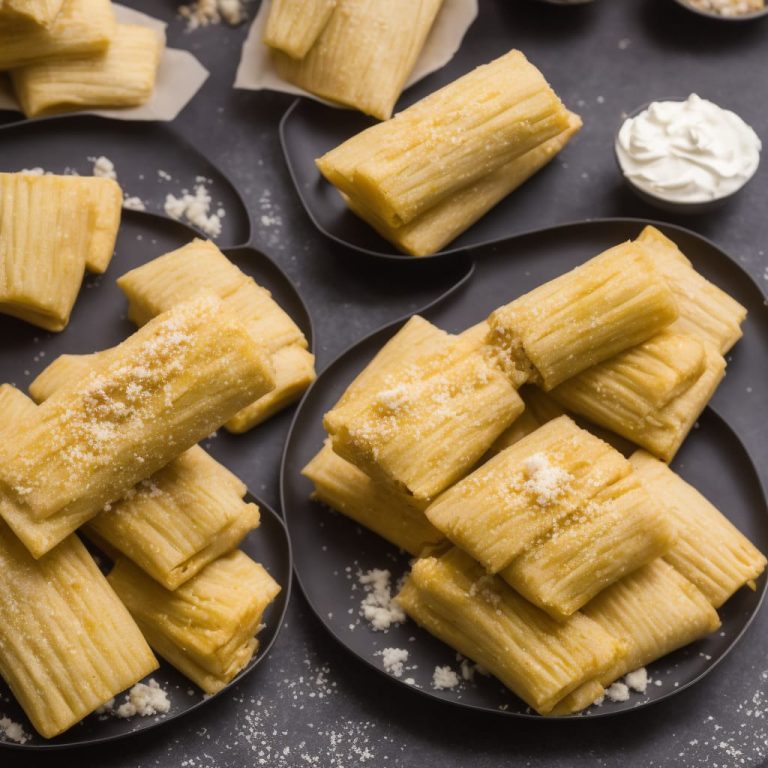Meatball Sandwich Recipe
The meatball sandwich’s history dates back to Italian-American cuisine. Immigrants who arrived in the United States during the late 19th and early 20th centuries brought with them their traditional recipes. Initially, meatballs were served as a main course, usually with pasta. However, the convenience of combining meatballs with bread quickly became popular.
The sandwich gained prominence in the mid-20th century as American diners and delis started offering it as a menu staple. New York City played a significant role in popularizing this dish, with numerous Italian delis making it a specialty. The combination of hearty meatballs, rich marinara sauce, and provolone or mozzarella cheese proved irresistible.
Regional variations also emerged over time. In Philadelphia, for example, the meatball sandwich (or “hoagie”) often includes a variety of cheeses and additional toppings like sautéed peppers and onions. West Coast versions might incorporate more herbs and spices into the sauce or meatball mixture.
Modern meatball sandwiches continue to evolve, reflecting changing tastes and dietary preferences. Some versions use turkey or plant-based meatballs, focusing on healthier or vegetarian options without compromising on flavor.
Considering the meatball sandwich’s widespread appeal and adaptability, it’s no surprise this comfort food retains its popularity across various cuisines and culinary traditions.
Key Ingredients of a Classic Meatball Sandwich
The Role of Meatballs
Meatballs form the core of a classic meatball sandwich. Using a blend of ground beef, pork, or veal creates a rich flavor profile. Adding breadcrumbs, eggs, and Parmesan cheese binds the meat together while providing texture and taste. Herbs like parsley and oregano, along with minced garlic and onion, offer depth and a traditional Italian essence. Ensure even cooking by frying or baking the meatballs before incorporating them into the sandwich.
The Importance of the Right Bread
Selecting the right bread is critical for a perfect meatball sandwich. A sturdy roll, such as a baguette or Italian loaf, supports the weight and prevents sogginess. Toast the bread lightly before adding the meatballs and sauce to avoid a mushy texture. Look for bread with a crusty exterior and a soft, absorbent interior that complements the juicy meatballs and rich sauce.
Sauce and Seasonings
The sauce dramatically influences the flavor of your meatball sandwich. Marinara sauce is the classic choice, providing a tangy, tomato-based complement to the savory meatballs. Slow-cook tomatoes with garlic, basil, and olive oil to enhance the sauce’s depth. Seasonings like salt, pepper, and red pepper flakes customize the taste, allowing you to balance spiciness and sweetness. Fresh basil or parsley garnish adds aroma and color, completing the traditional profile of a classic meatball sandwich.
Variations of Meatball Sandwiches Around the World
Italian Influence
Italian influence runs deep in meatball sandwiches. Classic Italian meatball sandwiches use Polpette, which are traditional Italian meatballs, combining ground beef and pork with breadcrumbs, Parmesan, garlic, and parsley. These sandwiches are often served with marinara sauce and placed in a crusty, toasted ciabatta roll. Grated Parmigiano Reggiano commonly tops the sandwich.
American Twists
American twists on meatball sandwiches reflect regional flavors and fusion cuisines. In Philadelphia, you’ll find the “hoagie” version, featuring larger, spicier meatballs in a long roll with provolone cheese. In New York City, the sandwich may include additional toppings like mozzarella and peppers. West Coast versions might incorporate avocados and jalapeños for a spicy kick. In New Orleans, the Po’ Boy variation includes Creole-seasoned meatballs with remoulade sauce, served in French bread.
Swedish Meatball Sandwiches
Swedish meatball sandwiches use Köttbullar, which are smaller, spiced meatballs made from ground beef and pork, mixed with breadcrumbs and allspice. These are typically served in a sandwich with lingonberry jam, creamy gravy, and pickled cucumbers, providing a unique sweet-savory experience compared to traditional versions.
Middle Eastern Variations
Middle Eastern meatball sandwiches often feature Köfte, spiced meatballs made with ground lamb or beef, herbs, and spices like cumin and cilantro. These sandwiches are served in pita bread with tzatziki sauce, tomatoes, and onions. Some variations might include a harissa sauce for extra heat.
Asian Fusion Meatball Sandwiches
Asian fusion meatball sandwiches are creatively combining flavors and techniques from various Asian cuisines. In Vietnamese cuisine, the Bánh Mì meatball sandwich includes meatballs made from pork or chicken, seasoned with lemongrass, fish sauce, and ginger. These are served in a French baguette, topped with pickled vegetables, cilantro, and chili sauce. Korean-inspired versions might feature meatballs glazed with a gochujang-based sauce and paired with kimchi and scallions.
These diverse variations demonstrate the global appeal and adaptability of meatball sandwiches. Each region brings its unique flavors and ingredients, resulting in a myriad of delicious options for you to enjoy.
Cooking Tips for the Perfect Meatball Sandwich
Making Moist Meatballs
Use a mix of meats to retain moisture in meatballs. Combine ground beef, pork, and veal in a 50-25-25 ratio. Incorporate breadcrumbs and milk, as they create a tender texture. For every pound of meat, add 1/2 cup of breadcrumbs and 1/4 cup of milk. Avoid overmixing ingredients to prevent tough meatballs. Mix until just combined for the best results. Include eggs; one egg per pound of meat binds your mixture. Bake meatballs at 400°F for 20 minutes or until cooked through for an even, moist finish.
Sauce Pairings and Preparation
Choose sauces that complement your meatballs. Use classic marinara for Italian-style sandwiches. Simmer meatballs in the sauce for about 20 minutes after baking to deepen flavors. For a tangy twist, opt for a BBQ sauce or a sweet-and-sour sauce. Blend sauces with garlic, onions, and fresh herbs for enhanced taste. Salsa and guacamole work well for a Mexican fusion sandwich. When combining your sandwich ingredients, ensure both meatballs and sauces are hot to melt any included cheese and meld flavors cohesively.
Pairing Your Meatball Sandwich With Sides and Drinks
Best Side Dishes
Enhance your meatball sandwich experience by pairing it with thoughtfully selected side dishes. Serve crispy fries to add a delightful crunch to your meal. Coleslaw offers a refreshing contrast to the richness of the meat and sauce. Garlic bread complements the sandwich by echoing its Italian roots. For a healthier option, a Caesar salad provides a crisp, light counterpart to balance out the indulgence.
Drink Pairings
Choose the right drink to elevate your meatball sandwich. Opt for a classic soda, like cola or root beer, to complement the savory flavors. For an adult option, consider a robust red wine like Chianti, enhancing the meat’s richness. A cold beer, especially a pale ale or lager, pairs well by cutting through the sandwich’s heaviness. If you prefer non-alcoholic beverages, an iced tea offers a refreshing and balanced taste.
Conclusion
Creating the perfect meatball sandwich is an art that combines tradition and innovation. By selecting quality ingredients and experimenting with different sauces and sides, you can craft a sandwich that’s both delicious and memorable. Whether you prefer the classic Italian version or enjoy regional twists, the key is in the balance of flavors and textures. Pair your sandwich with the right drink, and you’ve got a meal that satisfies every craving. So next time you’re in the mood for a hearty, flavorful bite, remember the tips and tricks shared here to elevate your meatball sandwich game.






